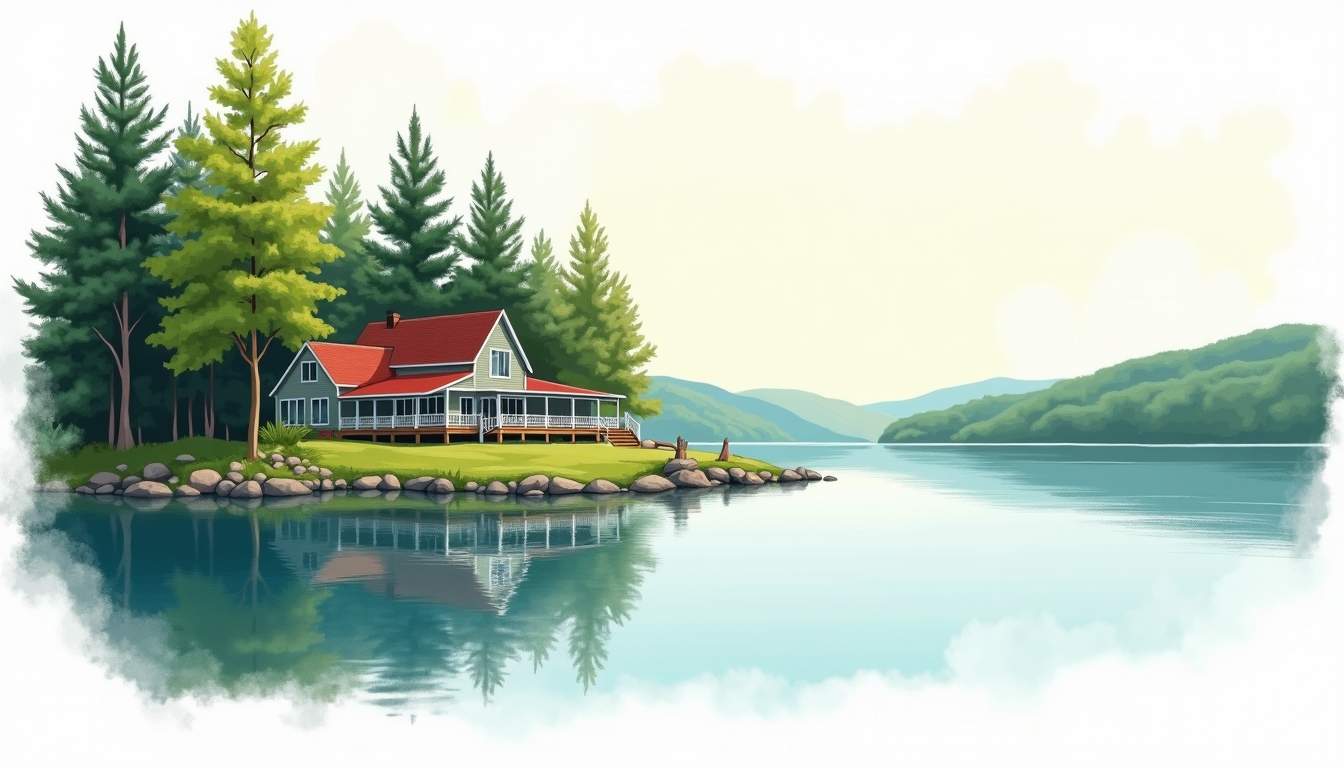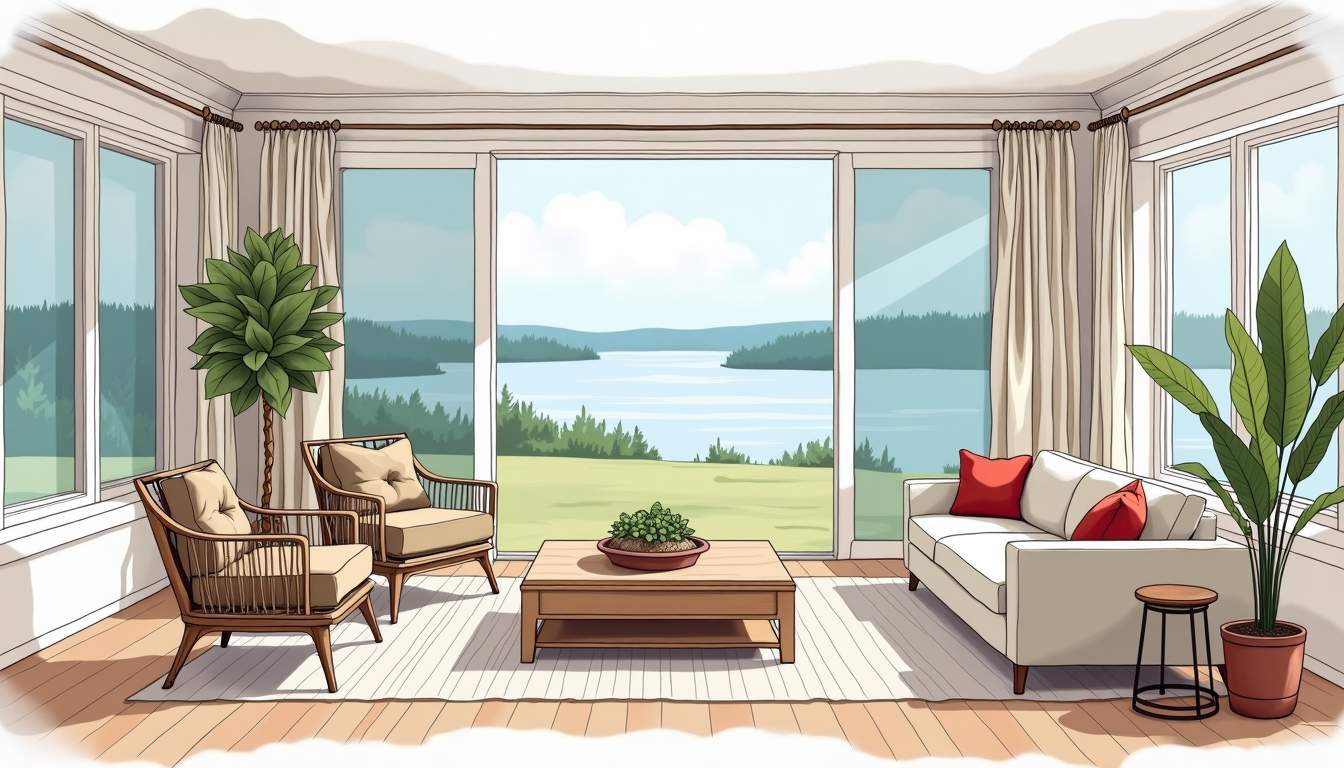
Watts Bar Lake offers a distinct blend of serene waterfront living, outdoor recreation, and small-town charm. This guide provides practical information for prospective lakehouse owners, long-term residents, and seasonal visitors interested in making the most of life on and around the water. Topics include choosing the right property, essential maintenance, design ideas, boating and fishing basics, community resources, and seasonal considerations.
Selecting a lakehouse begins with clarifying priorities: proximity to marinas, views, privacy, and access to services. Some buyers prioritize docks and deep-water access for boating, while others value sheltered coves for calmer water and more privacy. Understanding how each property sits relative to the lake and nearby public amenities will avoid surprises after purchase.
Consider zoning, flood risk, and dock permits early in the process. Watts Bar Lake spans multiple counties, which means regulations can differ significantly from one shoreline to another. Confirm setback rules, septic requirements, and the process for obtaining a dock permit. A property inspection should include shoreline stability and any existing seawall condition.
Think about daily life beyond the house. Proximity to grocery stores, medical services, schools, and highways matters, especially for full-time residents. Some neighborhoods are quiet and residential, while others are geared toward vacation rentals and tourism. Noise from nearby marinas or popular weekend anchoring spots can be a deciding factor for those seeking tranquility.
Assess the market for rental income if generating revenue is part of the plan. Properties with easy water access, multiple bedrooms and bathrooms, and appealing outdoor spaces generally perform better as rentals. Local rules around short-term rentals can be strict in certain areas, so verify any homeowner association rules and county ordinances before relying on rental income forecasts.
The dock is the focal point of any lakehouse lifestyle. It needs to be safe, functional, and suited to planned activities—whether launching a boat, swimming, or lounging by the water. Determine the best dock type for the shoreline: floating docks can adjust with water level changes, whereas fixed docks may be preferable for sturdier, permanent installations.
Permitting and environmental considerations are essential. Work with local authorities and reputable contractors to secure necessary permits and implement best practices to avoid erosion and protect aquatic habitats. Use durable, marine-grade materials resistant to moisture, sun, and occasional impacts from debris or ice.
Regularly inspect decking, supports, cleats, and electrical systems. Replace rotted wood, tighten fittings, and check for loose or corroded fasteners. Ensure ladders and life rings are accessible and visible. For properties with seasonal changes in water level, consider adjustable or floating systems that reduce stress on structural elements.
Plan for adequate mooring space based on vessel size and tidal variations. Properly sized bumpers and lines reduce wear on boats and docks. If the lakehouse will host multiple boats, create a clear system for assigning slips and handling guest vessels. Respect local no-wake zones and anchoring rules to maintain good neighbor relations and protect shoreline vegetation.
Lakehouse interiors should balance comfort with durability. Moisture-resistant flooring, washable paints, and furnishings that hide sand and water marks will reduce maintenance headaches. Open layouts that maximize lake views help houses feel larger and more connected to the outdoors.

Choose fabrics and finishes designed for active, wet environments. Performance linens and treated upholstery resist stains and dry quickly. Rugs with breathable backing prevent mildew, and window treatments that withstand humidity will last longer. Consider built-in storage for life jackets, fishing gear, and beach supplies to keep living spaces uncluttered.
Seamless transitions between indoor and outdoor spaces enhance the lake lifestyle. Large sliding or folding doors, covered patios, and screened porches extend living areas while protecting against insects and sun. Outdoor kitchens and fire pits add value and encourage year-round use of the yard.
Design choices that prioritize energy efficiency pay off over time. Insulation, energy-efficient windows, and programmable thermostats improve comfort and reduce bills. Ceiling fans and strategic shading can minimize cooling needs in summer, while wood stoves or high-efficiency heaters provide cozy warmth in cooler months.
Watts Bar Lake is known for boating, bass fishing, and family-friendly cruising. Understanding local waterways, marinas, and fishing hotspots will make recreational time safer and more productive. Take time to learn lake maps, submerged hazards, and speed-limited areas, especially if unfamiliar with local conditions.

For anglers, the lake supports largemouth and smallmouth bass, crappie, and catfish. Tailwater currents near dams can concentrate fish, while coves and points provide excellent structure for bass. Keep updated on seasonality for best fishing results and follow licensing and catch regulations to support sustainable fisheries.
Boating safety is a community responsibility. Maintain life jackets for all passengers, carry required signaling devices, and ensure the boat has adequate navigation lights. Consider basic boating courses and refresher classes to stay current with rules and enhance confidence, particularly for new boaters or those operating larger vessels.
Watts Bar’s shoreline supports hiking, birdwatching, kayaking, and paddleboarding. Explore public parks and trails that offer scenic overlooks and picnic areas. Local rental shops often provide kayaks and paddleboards for those who prefer to travel light or try a new activity before investing in equipment.
Seasonal preparation extends the life of a lakehouse and ensures safety. Spring calls for dock inspections, shoreline cleanup, and equipment checks. Summer brings heavy use—plan for routine maintenance of grills, pumps, and outdoor furniture. Fall is the time to winterize plumbing, secure boats, and trim trees to reduce storm damage risk.
Watts Bar can experience sudden storms and fluctuating water levels. Secure loose items on docks and decks, and have a plan for storm-related evacuations if necessary. Install backup power systems or portable generators for power outages, and protect critical systems like sump pumps and wells.
If the property will be unoccupied during winter, drain exterior hoses, protect exposed plumbing, and consider low-temperature settings for HVAC to prevent freeze damage. Remove perishables from outdoor kitchens and cover or store furniture and cushions. For properties with private wells, ensure backup measures or periodic checks to maintain water quality.
Insurance needs differ for waterfront properties. Typical homeowners’ policies may not cover all flood or water-related risks. Review coverage for flood insurance, septic system issues, and liability for dock or pool incidents. Document property condition with photos for claims and maintain receipts for upgrades and repairs.
The lake community blends long-time residents, weekenders, and visitors. Local marinas, bait shops, and service providers form the backbone of daily life. Supporting small businesses keeps essential services nearby and strengthens community ties. Community events often center on the lake—fish derbies, regattas, and festivals provide opportunities to meet neighbors and enjoy local culture.
Healthcare, schools, and emergency services vary by county. Identify the nearest hospitals, urgent care clinics, and emergency response contacts. Establish relationships with reliable contractors for septic, HVAC, and waterfront work; local professionals understand regional challenges and regulations better than out-of-area providers.
Preserving the lake environment requires intentional community action. Participate in shoreline cleanups, invasive species monitoring, and public education campaigns to reduce nutrient runoff and protect water quality. Volunteer organizations often coordinate efforts and provide tools and guidance for homeowners wanting to contribute.
Respecting quiet hours and shared spaces fosters long-term harmony. Discuss dock usage, noise expectations, and guest policies with immediate neighbors to prevent misunderstandings. Small gestures, such as notifying neighbors of large gatherings or coordinating boat traffic at peak times, build goodwill and preserve the peaceful character of the shoreline.
Buying a lakehouse involves several practical steps beyond standard home purchases. Request detailed surveys that include lake boundary lines, easements, and access rights. Confirm water rights and any shared ownership agreements for docks or private roads. Review title carefully for riparian rights and any existing liens related to shoreline improvements.
Working with real estate agents experienced in waterfront property can streamline the process. Seek agents who understand dock permitting, septic system inspections, and flood insurance nuances. Budget for ongoing maintenance costs, seasonal staffing if renting, and potential updates to bring older properties up to modern standards.
Negotiate contingencies for dock inspection, shoreline stabilization, and septic performance. Closing should include a clear transfer of any dock or equipment ownership and a walkthrough to note condition. Consider a surveyor’s confirmation of property lines, especially if shoreline erosion or accretion might alter boundaries over time.
Lakehouse ownership is a stewardship role as much as a lifestyle choice. Prioritize sustainable landscaping, smart septic management, and responsible boating practices to protect water quality. Long-term owners who invest in preservation often find the lake and community reciprocate with enduring enjoyment and stable property values.
Watts Bar Lake lakehouse living offers a rewarding mix of outdoor recreation, scenic comfort, and community connection. Thoughtful planning—whether for a weekend retreat or a full-time home—ensures the property meets lifestyle needs while protecting the unique environment that makes lakeside living desirable.

Approach every purchase and maintenance decision with an eye toward durability, local regulation, and environmental impact. With careful stewardship and engagement in community efforts, the lakehouse lifestyle remains both a personal sanctuary and a shared resource for future generations.
Ready to embrace the stunning beauty and rich lifestyle of Watts Bar Lake? Tennessee National offers an exclusive gated community where luxury meets lakeside living, complete with a Greg Norman Signature Golf Course, private marina, and waterfront dining. Whether you seek a move-in ready home or a custom build, our community provides over 20 amenities and vibrant social events designed to enrich your everyday experience. Schedule a private tour today and take the first step toward making Tennessee National your perfect lakehouse retreat. Schedule a Private Tour